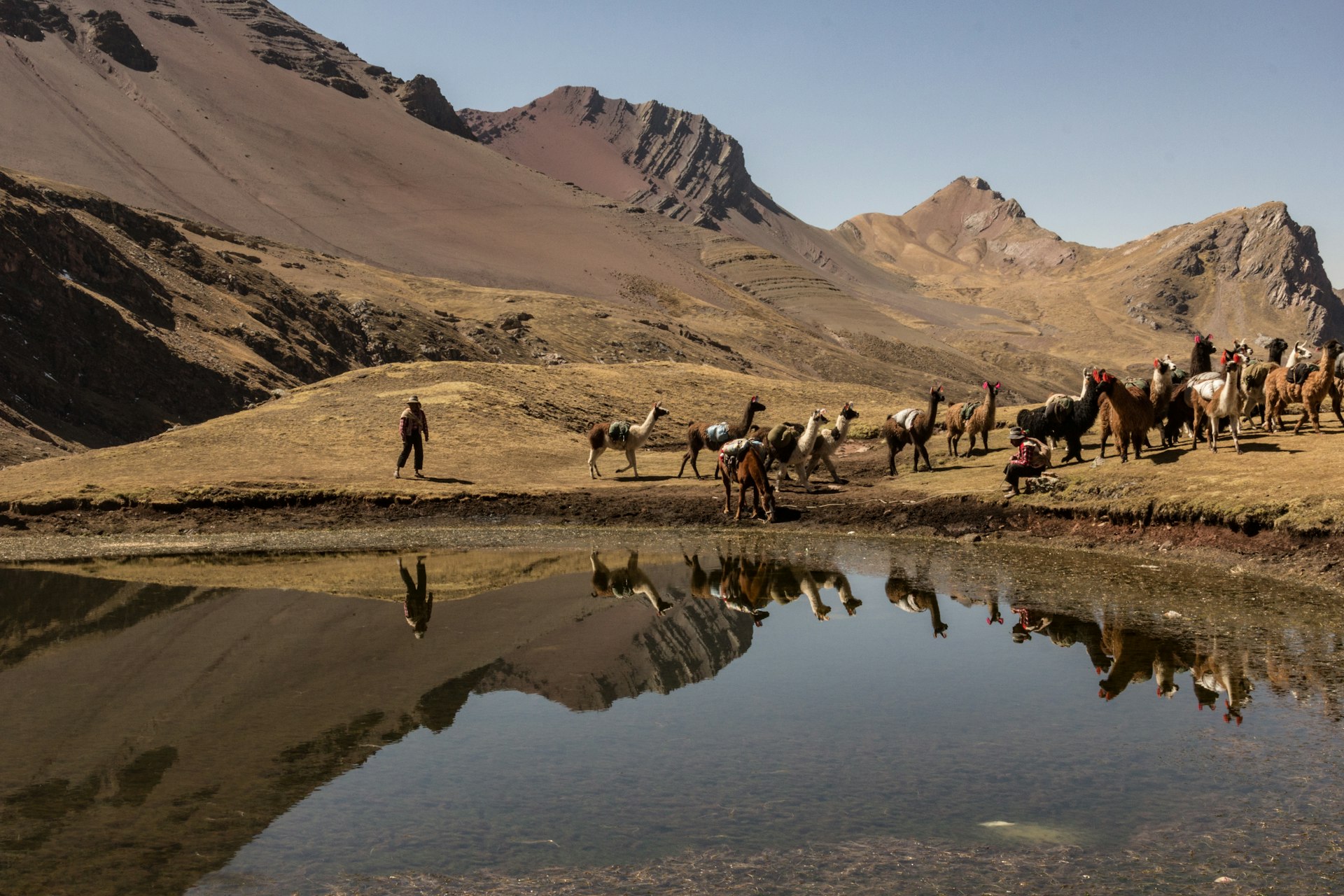Mastering the Modern Nomadic Lifestyle: Your Guide to Sustainable Travel and Living

Photo by m c on Unsplash
Introduction: The Rise of the Modern Nomad
The modern nomadic lifestyle has evolved from a niche travel trend into a growing global movement. Today’s nomads-remote workers, freelancers, and adventure seekers-are redefining what it means to live, work, and travel sustainably. This guide provides actionable strategies, real-world examples, and practical steps for embracing a modern nomadic lifestyle while minimizing your environmental impact and maximizing personal growth.
What Does It Mean to Live as a Modern Nomad?
Modern nomadism centers on continuous movement and adaptability. Unlike traditional travel, nomadic living is about integrating work, exploration, and personal development while being mindful of environmental and cultural footprints. Successful nomads prioritize:
- Environmental sustainability
- Personal wellbeing and health
- Minimalism and decluttering
- Lifelong learning and cultural immersion
By focusing on these pillars, nomads can create a rewarding lifestyle that benefits both themselves and the communities they visit [1] .
Sustainable Travel: Key Principles and Practices
Sustainability is at the core of responsible nomadism. Here are actionable steps to reduce your impact while enhancing your journey:
1. Choose Eco-Friendly Accommodations
Opt for green hotels, eco-lodges, or sustainable guesthouses that prioritize energy efficiency, water conservation, and waste reduction. Platforms like EcoBnb connect travelers with vetted eco-friendly properties worldwide, ranging from off-grid tiny homes to organic farm stays [2] . To access such options:
- Research sustainable accommodations before booking.
- Look for certifications or eco-labels (such as Green Key or EarthCheck).
- Use platforms like EcoBnb for global listings.
When platforms are unavailable, search for terms like “eco hotel” or “green guesthouse” in your destination to find local solutions.
2. Embrace Greener Transportation
Minimize your carbon footprint by choosing low-impact transport. Walking, cycling, and public transportation are ideal for local travel. For longer journeys, opt for buses or trains over flying or single-passenger car trips. In regions like the U.S. and Europe, bus companies such as FlixBus and Megabus offer affordable, low-emission options [3] . To travel sustainably:
- Plan routes using trains or buses whenever possible.
- Consider ridesharing with locals or other travelers-platforms like BlaBlaCar or hostel notice boards can help.
- Use taxi “pool” options to split rides and reduce emissions.
When air travel is unavoidable, reduce frequency and offset your carbon emissions through verified programs. Many airlines offer offset options during the booking process.
3. Slow Travel and Extended Stays
Slow travel is both more sustainable and enriching. By spending longer periods in one place, you reduce transit emissions, deepen your cultural experience, and form meaningful connections. Many nomads choose destinations with favorable visa policies for extended stays, such as Portugal, Thailand, or Mexico. To implement slow travel:
- Research “digital nomad visas” or long-term stay policies at official embassy websites.
- Plan your itinerary to minimize frequent relocations.
Check government immigration websites for the latest requirements and application processes.
Decluttering and Minimalism: Traveling Light for Freedom
A minimalist approach is essential for seamless nomadic living. Efficiently managing your belongings simplifies travel and reduces stress. Decluttering services, such as those offered by some moving companies, can help you pare down possessions before departure [1] . For ongoing minimalism:
- Assess each item for utility and value before packing.
- Adopt digital tools to replace physical items (e.g., e-books, cloud storage).
- Donate, recycle, or responsibly dispose of unnecessary goods.
Many nomads recommend revisiting your packing list after each trip to further streamline possessions.

Photo by Fadhil Abhimantra on Unsplash
Staying Healthy and Balanced on the Road
Physical and mental wellbeing are key to sustaining a nomadic lifestyle. Regular exercise, mindful eating, and access to healthcare should be priorities. Nomads may face challenges such as isolation or adapting to new environments, but these can be addressed through:
- Maintaining routines (daily walks, yoga, or fitness classes)
- Using portable health insurance plans with global coverage
- Joining online or local communities to combat loneliness
Consider telemedicine services for medical consultations while abroad. Search for “international health insurance” and compare plans from reputable providers before departure.
Community Integration and Cultural Respect
Respect for local cultures and positive community impact are central to sustainable nomadism. Engage with local customs, support small businesses, and participate in community-led projects. Homestays, work exchanges, and house-sitting offer immersive experiences while reducing accommodation costs [2] :
- Look for house-sitting opportunities through platforms like TrustedHousesitters (verified and globally used).
- Seek out local volunteer programs-search for “volunteer travel [destination]” to find reputable organizations.
- Patronize independent cafes, restaurants, and shops to support the local economy.
These approaches foster mutual understanding and sustainability in every destination.
Technology and Tools for Sustainable Nomads
Harnessing technology can make your travels more sustainable. Several apps and websites help minimize your environmental footprint:
- EcoBnb : Connects you with verified eco-friendly accommodations worldwide [2] .
- My Little Plastic Footprint : An app that helps you track and reduce plastic use [2] .
- Travel forums and digital nomad communities provide reviews and advice on sustainable practices.
When choosing digital tools, prioritize those with transparent sustainability commitments or certifications.
Practical Steps to Get Started
Ready to embark on your sustainable nomadic journey? Here’s how to begin:
- Define your goals and destinations. Consider your work needs, climate preferences, and visa options.
- Downsize your belongings. Use decluttering checklists and consider professional services if needed.
- Secure sustainable accommodation using verified eco-friendly platforms or by searching for “eco hotels” in your chosen area.
- Plan your transportation. Map routes using trains or buses, research ridesharing options, and minimize flying.
- Invest in portable health insurance and research telemedicine options.
- Connect with local and online communities for support and networking.
- Continue learning about sustainability and adapt your practices as you go.
For official information on visas and regulations, always refer to embassy or government immigration websites. When searching for health insurance, use terms like “international health insurance” to find reputable providers.
Overcoming Challenges and Alternative Approaches
Modern nomads often face hurdles such as visa restrictions, fluctuating income, or culture shock. To mitigate these:
- Consider destinations with digital nomad visas or long-term tourist policies.
- Maintain multiple income streams through remote work or freelancing platforms.
- Engage in language learning to ease cultural transitions-apps like Duolingo and local language schools can help.
If full-time travel isn’t feasible, you may adopt a “semi-nomadic” approach by splitting time between a home base and international destinations.
Conclusion: Making Your Nomadic Journey Sustainable
Adopting a modern nomadic lifestyle with sustainable travel requires intention, adaptability, and continuous learning. By prioritizing eco-friendly choices, cultural respect, and personal wellbeing, you can enjoy the freedom of movement while contributing positively to the world. Use verified tools and follow the step-by-step guidance above to start your journey today.
References
MORE FROM resultsfordeals.com













